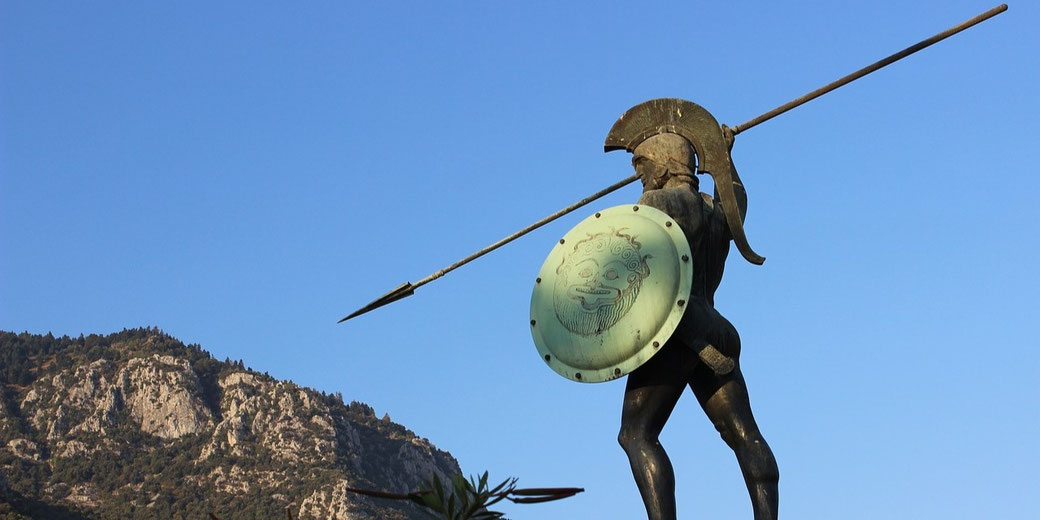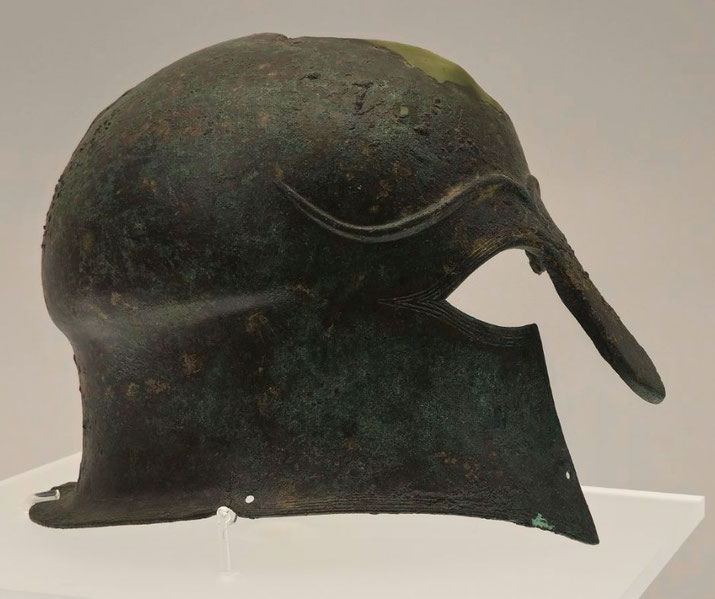What was a Greek phalanx and how did it work?

The ancient Greek phalanx is one of the most famous military formations in history. This tightly packed formation of heavily armored soldiers was instrumental in the success of Greek armies in battles such as Marathon, Thermopylae, and Chaeronea.
In this article, we'll explore what a Greek phalanx was and how it worked.
What was a Greek phalanx?
A phalanx was a military formation used by the ancient Greeks from the 7th century BCE to the 4th century BCE.
It was composed of heavily armed infantry soldiers called hoplites who were organized in rows and files, with each soldier standing shoulder to shoulder and carrying a large, round shield called an aspis, a spear, and a short sword.
The phalanx was typically arranged in a rectangular shape, with the front line consisting of the most experienced and heavily armored soldiers, known as the "hoplite elite." The soldiers in the back ranks were typically less experienced and lightly armored.
This formation allowed the phalanx to present a solid wall of shields to the enemy, which made it difficult for attackers to penetrate.
How did the phalanx work?
The shield wall: The soldiers in the front of the phalanx held their shields out in front of them, overlapping with the shields of the soldiers beside them. This created a solid wall of shields that was difficult for attackers to penetrate.
The phalanx push: Once the phalanx made contact with the enemy, the soldiers would push forward with their shields, using the weight of their bodies to push the enemy back. This tactic relied on the strength and discipline of the soldiers in the phalanx and could be incredibly effective.
The overhand thrust: Hoplites carried long spears called dorys, which they would hold overhand and thrust forward at the enemy. This allowed them to attack from behind the shield wall and keep the enemy at a distance.
The flanking maneuver: If the phalanx was able to break through the enemy's lines, the soldiers on the flanks would move to the sides and attack the enemy from behind. This was often a decisive maneuver that could turn the tide of a battle.

Traditional verses Macedonian phalanxes
The details provided above describe the traditional Greek phalanx formation and tactics. It was commonly used by the most famous city-states like Athens, Sparta, and Thebes. However, by the end of the 5th century BCE, it became apparent that improvements could be made.
Ultimately, it would take the genius of a region in the northern region of modern Greece to have the courage to experiment with new ideas in order to create an unstoppable new version: Macedonia.
In contrast to the traditional phalanx, the Macedonian phalanx, which was developed by Philip II of Macedon in the 4th century BCE, was composed of soldiers called phalangites. The phalangites were equipped with a long spear called a sarissa, which was over 18 feet long, and a small shield.
Unlike the hoplites of the traditional Greek phalanx, the phalangites were not heavily armored, which allowed them to move more quickly and easily. The Macedonian phalanx was typically arranged in a deeper formation than the Greek phalanx, with up to 16 ranks of soldiers.
This allowed the phalanx to present a wall of spears to the enemy that was nearly impenetrable. The Macedonian phalanx was also effective at keeping the enemy at a distance, as the length of the sarissa allowed the soldiers to attack from several feet away.
Another significant difference between the two formations was the use of tactics. The Greek phalanx relied on the shield wall and the overhand thrust of the spear, while the Macedonian phalanx used a variety of tactics, including the sarissa charge, in which the soldiers would run forward and lower their spears, impaling the enemy.
The Macedonian phalanx also made use of companion cavalry, which was composed of heavily armored soldiers on horseback who could charge into the enemy's flank.
Finally
The success of the phalanx relied heavily on the training and discipline of the soldiers. Phalanxes were typically made up of citizens who were required to train and serve in the army as part of their civic duty.
This created a sense of camaraderie and shared purpose among the soldiers, which made them more effective in battle.
The Greek phalanx was a highly effective military formation that allowed Greek armies to achieve great victories in battle. Its success relied on the discipline, training, and strength of the soldiers, as well as the tactics used within the formation.
The legacy of the phalanx can still be seen in modern military formations and tactics, making it a lasting and important part of military history.
What do you need help with?
Download ready-to-use digital learning resources
Copyright © History Skills 2014-2025.
Contact via email
With the exception of links to external sites, some historical sources and extracts from specific publications, all content on this website is copyrighted by History Skills. This content may not be copied, republished or redistributed without written permission from the website creator. Please use the Contact page to obtain relevant permission.





